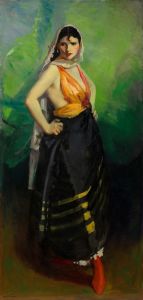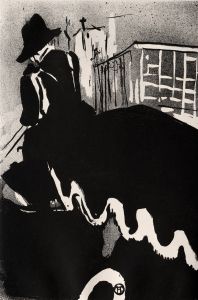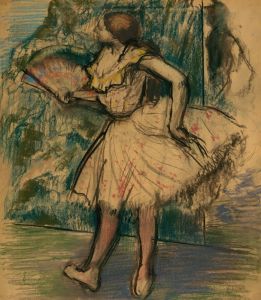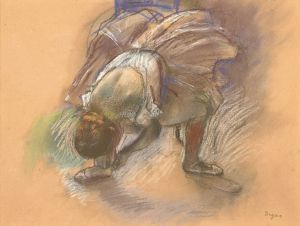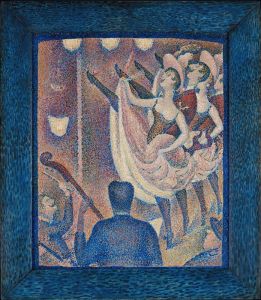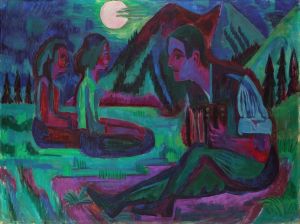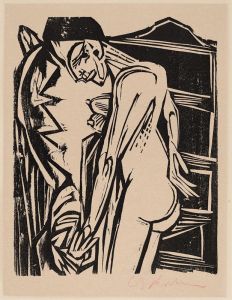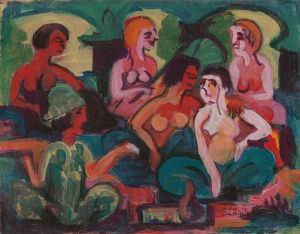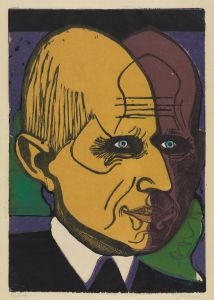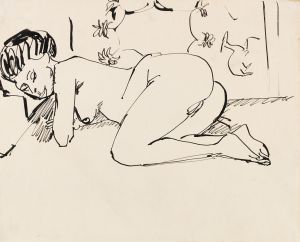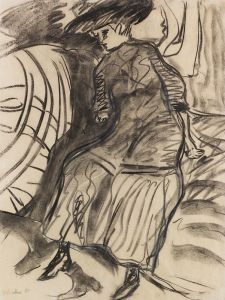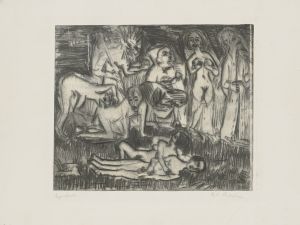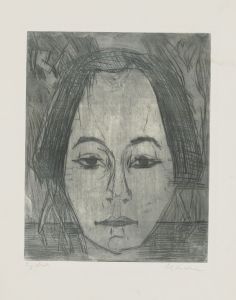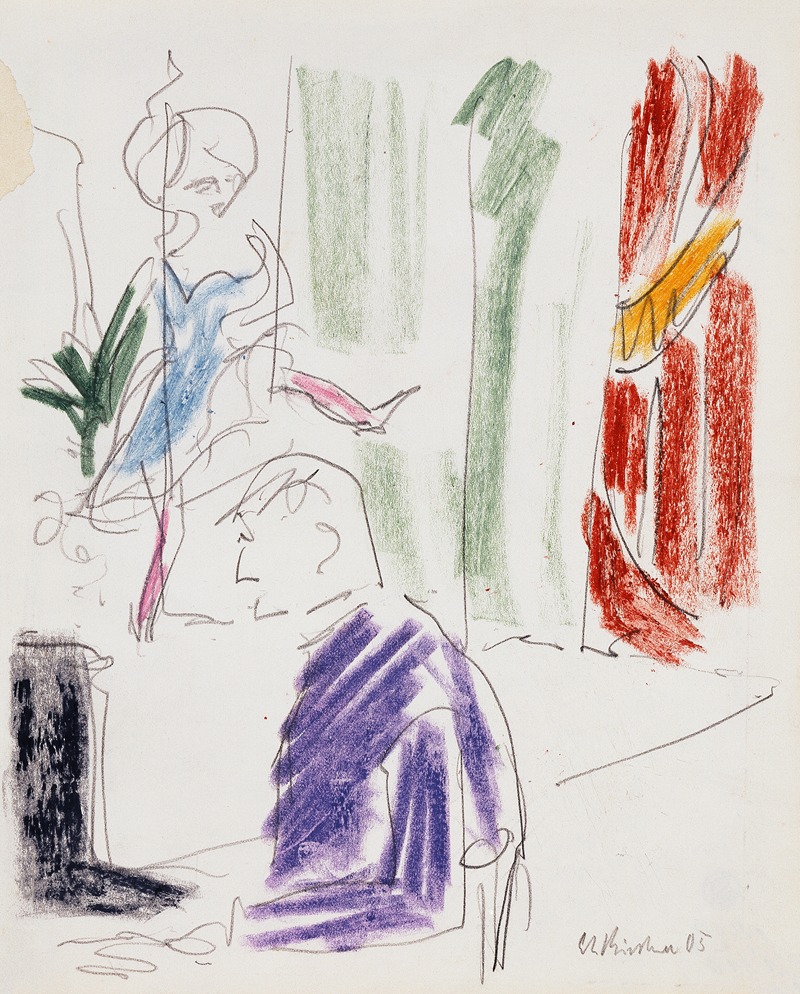
Variété -Tänzerin und Klavierspieler
A hand-painted replica of Ernst Ludwig Kirchner’s masterpiece Variété -Tänzerin und Klavierspieler, meticulously crafted by professional artists to capture the true essence of the original. Each piece is created with museum-quality canvas and rare mineral pigments, carefully painted by experienced artists with delicate brushstrokes and rich, layered colors to perfectly recreate the texture of the original artwork. Unlike machine-printed reproductions, this hand-painted version brings the painting to life, infused with the artist’s emotions and skill in every stroke. Whether for personal collection or home decoration, it instantly elevates the artistic atmosphere of any space.
Ernst Ludwig Kirchner's painting Variété - Tänzerin und Klavierspieler (translated as Variety - Dancer and Piano Player) is a notable work by the German Expressionist artist. Kirchner, a founding member of the art movement Die Brücke (The Bridge), is renowned for his vibrant and dynamic depictions of modern urban life, as well as his innovative use of color and form. This painting exemplifies his interest in capturing the energy and atmosphere of nightlife and entertainment during the early 20th century.
Created in 1913, Variété - Tänzerin und Klavierspieler reflects Kirchner's fascination with the cabaret and variety theater scenes that were popular in cities like Berlin during this period. The painting portrays a dancer performing on stage, accompanied by a piano player. The composition is characterized by bold, angular lines and a vivid color palette, hallmarks of Kirchner's Expressionist style. The figures are stylized and abstracted, emphasizing movement and emotion rather than realistic detail. The dancer's pose conveys a sense of rhythm and vitality, while the piano player appears focused on their performance, contributing to the dynamic interaction between the two figures.
Kirchner's work often explored themes of modernity, urban life, and the human experience, and this painting is no exception. The setting of a variety theater, with its lively and sometimes chaotic atmosphere, provided an ideal subject for Kirchner to experiment with form and color. The painting captures the fleeting, ephemeral nature of performance, as well as the vibrant cultural energy of the time.
The painting is also significant within the context of Kirchner's broader body of work. During the early 1910s, he frequently depicted scenes of Berlin's nightlife, including dancers, musicians, and performers. These works reflect his interest in the intersection of art and modern life, as well as his desire to break away from traditional artistic conventions. Kirchner's innovative approach to composition and his use of expressive, non-naturalistic colors had a profound influence on the development of modern art.
Today, Variété - Tänzerin und Klavierspieler is recognized as an important example of Kirchner's contribution to the Expressionist movement. The painting is held in the collection of the Kunstmuseum Basel in Switzerland, which houses a significant number of works by the artist. It continues to be celebrated for its dynamic representation of performance and its embodiment of the artistic and cultural innovations of the early 20th century.





